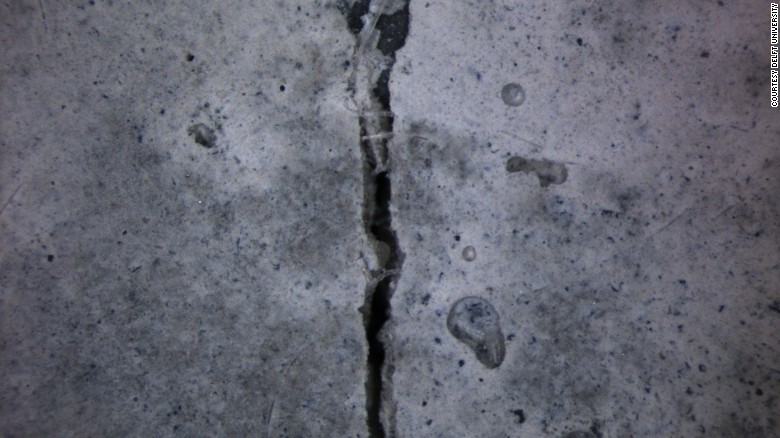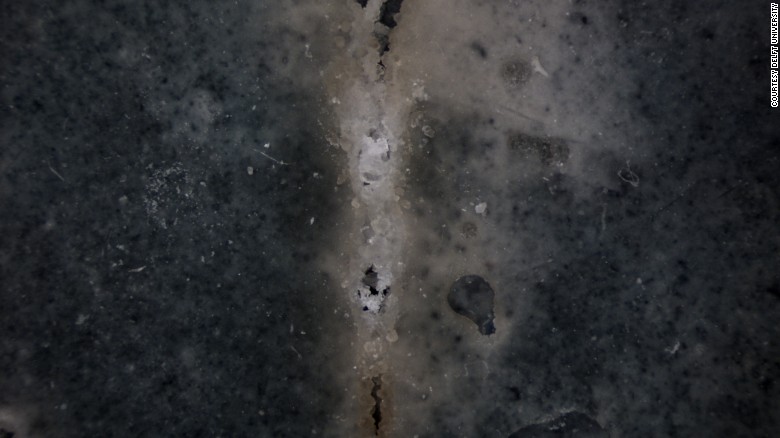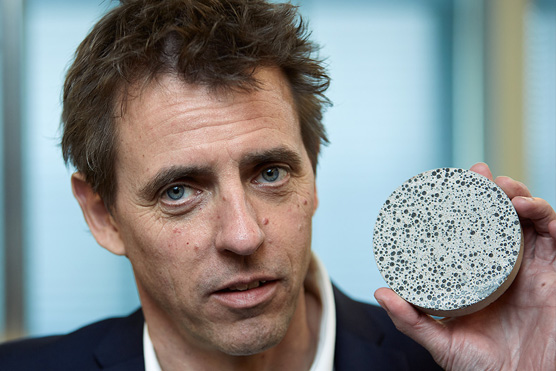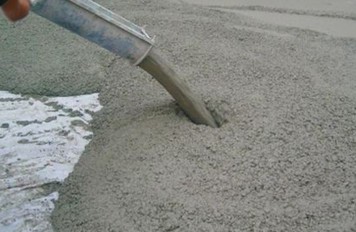Using bacteria to make self-healing cement

It is a common phenomenon for the traditional concrete to crack, requiring maintenance and reparations before reinforcement starts to corrode. Luckily, it seems that Delft University microbiology professor Henk Jonkers has found the solution to this problem. Inspired by nature, he developed ‘Bio-concrete’, a new type of material that brings together biology and civil engineering and could save billions in construction costs by improving the lifespan of buildings, bridges and roads. "It is combining nature with construction materials. Nature is supplying us a lot of functionality for free - in this case, limestone-producing bacteria’’, says the professor.
‘Bio-concrete’ is infused with limestone-producing bacteria in capsule form, along with calcium lactate. The bacteria that Jonkers used, either Bacillus pseudofirmus or Sporosarcina pasteurii, thrive in alkaline conditions and are found naturally in highly alkaline lakes near volcanoes. Being mixed with concrete and distributed evenly throughout it, they can lay there in a dormant state for up to 200 years; only when the concrete cracks, air and moisture awaken the bacteria which use the calcium lactate as a food source and start to produce limestone, sealing off the cracks in 3 weeks’ time. The technology, currently able to seal cracks of any length but only up to 0.8 mm wide, was a finalist for the European Inventor Award 2015, an initiative of the European Patent Office (EPO).
Limitations
Currently the cost of this new technology is still considered prohibitive, as it is twice the cost of regular concrete manufacture (70-80 € / m3), making it only viable for projects where leakage and corrosion are particularly problematic, such as underground and underwater structures. The price of the calcium lactate nutrient for the bacteria is part of the problem, but Jonkers and his team are testing a sugar-based alternative instead that is expected to decrease the total cost, making ‘Bio-Concrete’ a sustainable prevention method.
Testing the new concrete
The world’s first structure where ‘Bio-concrete’ has been used is a lakeside lifeguard station in the Netherlands. Built in 2011 and subject to highly varied sunlight and weather conditions, the prototype has remained watertight since its construction.

A slab of bio-concrete has just cracked

The crack after 28 days

The crack after 56 days
Photos source: CNN



Media
Want to read more like this story?

Video: Cement Heals Its cracks With Bacteria
May, 25, 2015 | NewsDutch researchers have developed the so-called self-healing concrete which uses an inbuilt immune sy...
Concrete Structures
Jan, 01, 2019 | EducationConcrete structures are constructions that utilize concrete as the primary building material. Conc...

4 methods to repair active cracks in concrete
Mar, 08, 2019 | NewsThe four most efficient methods to repair active cracks in concrete are presented below. Active c...

Concrete that traps CO2 emissions for good
Jul, 16, 2018 | NewsA new method to produce concrete that traps harmful CO2 emissions and increases the compression stre...

Zero-cement concrete will reduce the environmental impact in construction industry
Aug, 08, 2024 | NewsDue to the climate crisis and the high CO2 emissions of concrete, engineers and scientists are seek...

The longest 3D-printed concrete bicycle bridge
Sep, 09, 2021 | NewsThe Dutch city of Nijmegen has now the longest concrete 3D-bicycle bridge in the world. The length...

Concrete is a climate disaster and thus it’s time to clean it up
Oct, 29, 2021 | NewsFor soaring bridges, dramatic skyscrapers and even the path around your local park, builders love c...

10 state-of-the-art sustainable materials that will alter construction industry
Jun, 10, 2024 | NewsIn 2024, sustainable materials become state-of-the-art in construction since the construction indus...

Concrete damage based on 4 crucial factors
Feb, 01, 2024 | NewsConcrete often sustains damage due to various factors, either environmental or mechanical. In the f...
Trending

Spectacular interchanges around the world

New Release - STAAD.Pro 2024 - 2

ADINA 2025 for Structural WorkSuite

ADINA 2025 New Release!

Drilled Shafts Project on Gilbert Road Bridge

Powerful earthquake shakes central Philippines, dozens killed

Partial collapse of apartment building in NYC due to blast loading

